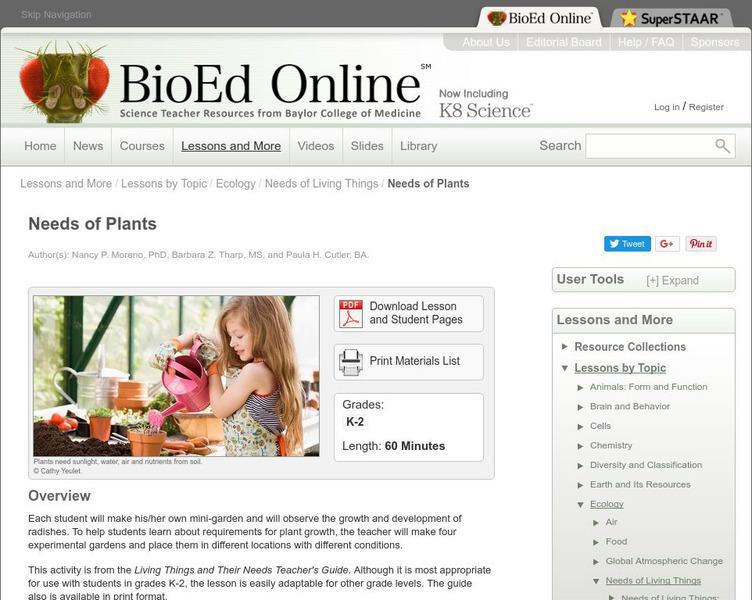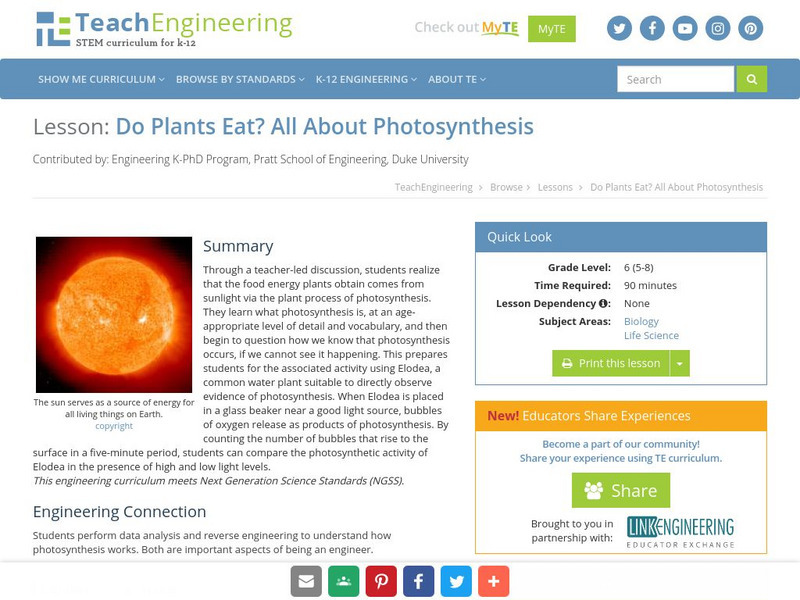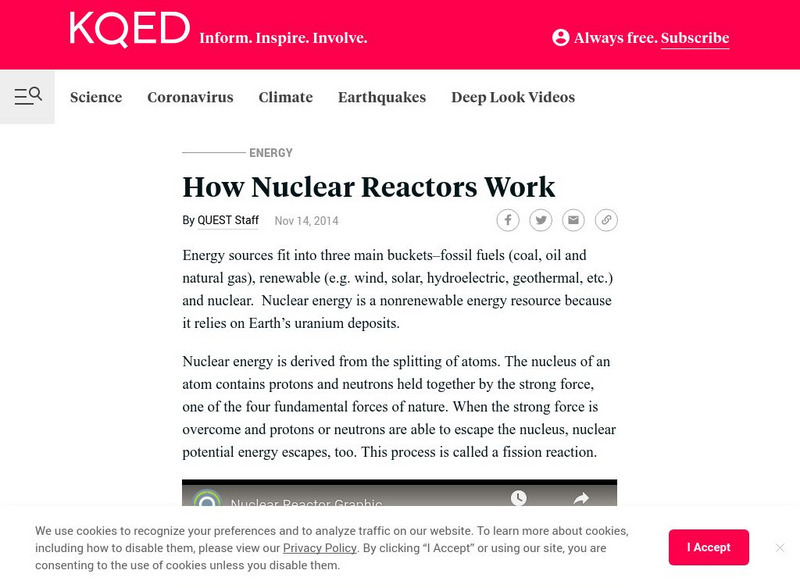Alabama Learning Exchange
Alex: Watch That Plant Grow
This lesson allows learners to explore horticulture within a controlled environment, a greenhouse. Students engage in hands-on activities as they grow their own plants and chart data concerning the conditions related to plant growth in a...
PBS
Pbs Learning Media: Seeds Away
This collection of images shows several types of plant seeds, each with a different mechanism for dispersing from the parent plant.
Huntington Library
Huntington Library: Garden Lesson Plans: Learning From Leaves [Pdf]
An investigation into how light levels affect leaf adaptations in plants.
Cornell Lab of Ornithology
Habitat Network: 8 Reasons to Plant Something New
Read about eight habitat-enhancing reasons to expand the plant diversity in a backyard.
Ohio State University
Ohio State University: Plant Signals & Sensors
A concise review of how plants sense environmental conditions and respond to stimuli. Good illustrations and a quiz enhance learning along with links to additional information.
Ohio State University
Ohio State University: Plant Cells
Use this informative essay and these great illustrations to learn how plant cells are different from animal cells.
Enchanted Learning
Enchanted Learning: Pond Life Animal Printouts
Filled with printable pages of both plant and animal pond life, Enchanted Learning features fact sheets with color pictures.
PBS
Pbs Learning Media: Ruminants
Why do cows chew their cud? This video segment from Secret of Life: "Accidents of Creation" describes the physical adaptations that have made ruminants some of the most important, and certainly the most efficient, plant eaters on earth.
Cornell Lab of Ornithology
Habitat Network: Get to Know the Plants in Your Yard With These Plant Id Tips
A guide that walks through some of our recommended tactics when identifying plants.
Huntington Library
Huntington Library: Learning From Leaves: A Look at Leaf Size [Pdf]
A instructional activity unit where students examine and measure leaf sizes, as well as look at their textures, and draw conclusions about environmental factors that may have influenced their growth positively or negatively.
PBS
Pbs Learning Media: Nuclear Reaction: Meltdown
What happens when a nuclear reactor overheats? This video segment adapted from FRONTLINE looks at the nuclear reactor meltdown at Chernobyl, the worst accident of its kind.
PBS
Pbs Learning Media: Floral Arrangements
Explore a few of the ways plants pollinate each other in this video segment from Sexual Encounters of a Floral Kind.
BioEd Online
Bio Ed Online: Needs of Plants
Each student will make his/her own mini-garden and will observe the growth and development of radishes. To help students learn about requirements for plant growth, the teacher will make four experimental gardens and place them in...
Primary Resources
Science and Plants for Schools: Living Processes
Great site to help teachers enhance learning about plants and how they grow. There are many downloads including lesson plans, experiments, and activities.
TeachEngineering
Teach Engineering: Do Plants Eat?
Through a teacher-led discussion, learners realize that the food energy plants obtain comes from sunlight via the plant process of photosynthesis. They learn what photosynthesis is, at an age-appropriate level of detail and vocabulary,...
Huntington Library
Huntington Library: Garden Lesson Plans: Experiments in Tea Dyeing [Pdf]
An investigation for younger students to learn how plants were used in the past to dye cloth. Students will dye pieces of fabric using different types of teas and compare the results. Worksheets are included.
BioEd Online
Bio Ed Online: How Does Light Affect Root Growth?
In this instructional activity for students from 3rd-12th grades will learn to build an experiment chamber to test the effects of light on Brassica rapa roots, and compare their results with outcomes from plant experiments conducted...
Annenberg Foundation
Annenberg Learner: The Habitable Planet: Unit 9: Biodiversity Decline
This is an extensive learning module on biodiversity and its decline. It looks at ways biodiversity is threatened, the possibility of another mass extinction, the causes and consequences of habitat loss, factors that drive biodiversity...
PBS
Kqed: Quest: How Nuclear Reactors Work
This interactive explorer allows students to click on a hot spot on the image and learn more about how nuclear reactors work.
San Diego Zoo Global
San Diego Zoo: Carnivorous Plants
Learn about the characteristics, soil requirements, and prey of carnivorous plants.
Curated OER
National Park Service: Cuyahoga Valley: Nature and Science: Nonnative Species
Describes the impact of invasions of non-native plant and insect species in Cuyahoga Valley National Park in Ohio, including the gypsy moth and the emerald ash borer.
Cornell Lab of Ornithology
Habitat Network: Installing Cover Boards for Reptiles
Learn how to provide a cover board for reptiles who generally prefer drier conditions.
Huntington Library
Huntington Library: Garden Lesson Plans: Why Is an Apple Like a Suitcase? [Pdf]
A mini-unit on fruits and seeds for younger learners. Students will learn that fruit is like a suitcase for seeds, and that together they help plants to reproduce. Includes ELL suggestions, extension activities, and worksheets.
Alabama Learning Exchange
Alex: The Amazing Antigravity Stem
This lesson consists of an experiment which will demonstrate how a plant uses its stem to carry water and minerals from the roots to the leaves and other parts of the plant. Students will then use their word processing skills to record...











